-
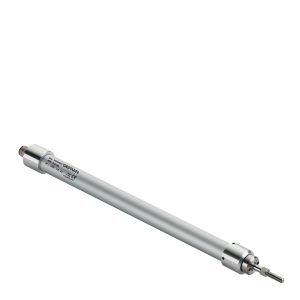 Features • This transducer is designed to guarantee a high protection level (IP67) in applications under harsh conditions and outdoors, where it may be necessary to work in the direct presence of dust, dirt, or liquids (not in prolonged immersion) • Its high protection level and very small size make the PZ67-S unique in terms of reliability and flexible installation • It is ideal for glass cutting and washing machines or for honers and sanders if there is direct exposure to liquids or even just steam • Indicated for test and bench equipment, especially if outdoors
Features • This transducer is designed to guarantee a high protection level (IP67) in applications under harsh conditions and outdoors, where it may be necessary to work in the direct presence of dust, dirt, or liquids (not in prolonged immersion) • Its high protection level and very small size make the PZ67-S unique in terms of reliability and flexible installation • It is ideal for glass cutting and washing machines or for honers and sanders if there is direct exposure to liquids or even just steam • Indicated for test and bench equipment, especially if outdoors -
 Features • This transducer is designed to guarantee a high protection level (IP67) in applications under harsh conditions and outdoors, where it may be necessary to work in the direct presence of dust, dirt, or liquids (not in prolonged immersion) • Its high protection level and very small size make the PZ67-A unique in terms of reliability and flexible installation • It is ideal for glass cutting and washing machines or for honers and sanders if there is direct exposure to liquids or even just steam • Indicated for test and bench equipment, especially if outdoors
Features • This transducer is designed to guarantee a high protection level (IP67) in applications under harsh conditions and outdoors, where it may be necessary to work in the direct presence of dust, dirt, or liquids (not in prolonged immersion) • Its high protection level and very small size make the PZ67-A unique in terms of reliability and flexible installation • It is ideal for glass cutting and washing machines or for honers and sanders if there is direct exposure to liquids or even just steam • Indicated for test and bench equipment, especially if outdoors -
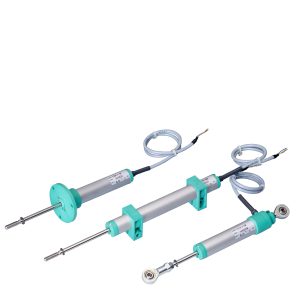 Principal Characteristics • The 3/4” cylindrical housing, plus the option of all fastening systems (brackets, joints or flange), makes the PZ34 series highly versatile for a wide range of applications. • The optimized mechanical structure makes the product suitable for developing various special executions (contact Gefran customer service for details). • Installation is simplified by the lack of electrical signal variation at output outside theoretical electrical stroke. • Ideal for wood and glass working and finishing machines and for car test benches.
Principal Characteristics • The 3/4” cylindrical housing, plus the option of all fastening systems (brackets, joints or flange), makes the PZ34 series highly versatile for a wide range of applications. • The optimized mechanical structure makes the product suitable for developing various special executions (contact Gefran customer service for details). • Installation is simplified by the lack of electrical signal variation at output outside theoretical electrical stroke. • Ideal for wood and glass working and finishing machines and for car test benches. -
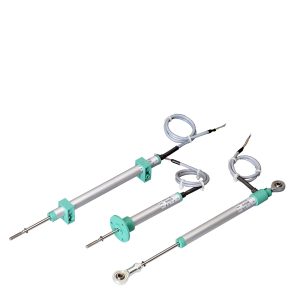 Principal Characteristics • The 1/2” cylindrical housing, plus the option of all fastening systems (brackets, joints or flange), makes the PZ12 series highly versatile for a wide range of applications. • The optimized mechanical structure makes the product suitable for developing various special executions (contact Gefran customer service for details). • Installation is simplified by the lack of electrical signal variation at output outside theoretical electrical stroke. • Ideal for wood and glass working and finishing machines and for car test benches.
Principal Characteristics • The 1/2” cylindrical housing, plus the option of all fastening systems (brackets, joints or flange), makes the PZ12 series highly versatile for a wide range of applications. • The optimized mechanical structure makes the product suitable for developing various special executions (contact Gefran customer service for details). • Installation is simplified by the lack of electrical signal variation at output outside theoretical electrical stroke. • Ideal for wood and glass working and finishing machines and for car test benches. -
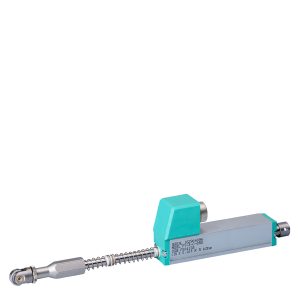 Principal Characteristics • The side connection creates a through-rod structure with double rod support, guaranteeing greater overall strength of the transducer. • The return spring automatically returns the rod to zero position, making the transducer suitable for comparator applications. • The tip with roller bearing is suitable for applications where the object to be measured may be subject to shifts transverse to the transducer axle (shaft is prevented from rotating). • Ideal for checking the flatness or thickness of panels of various materials. Can also be used for valves or mechanical parts when the rod cannot be attached to the moving object
Principal Characteristics • The side connection creates a through-rod structure with double rod support, guaranteeing greater overall strength of the transducer. • The return spring automatically returns the rod to zero position, making the transducer suitable for comparator applications. • The tip with roller bearing is suitable for applications where the object to be measured may be subject to shifts transverse to the transducer axle (shaft is prevented from rotating). • Ideal for checking the flatness or thickness of panels of various materials. Can also be used for valves or mechanical parts when the rod cannot be attached to the moving object -
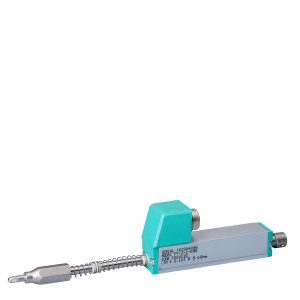 Principal Characteristics • The side connection creates a through-rod structure with double rod support, guaranteeing greater overall strength of the transducer. • The return spring automatically returns the rod to zero position, making the transducer suitable for comparator applications. • The tip with stainless steel ball is suitable for applications where the object to be measured is not subject to shifts transverse to the transducer axle. • Ideal for checking the flatness or thickness of panels of various materials. Can also be used for valves or mechanical parts when the rod cannot be attached to the moving object.
Principal Characteristics • The side connection creates a through-rod structure with double rod support, guaranteeing greater overall strength of the transducer. • The return spring automatically returns the rod to zero position, making the transducer suitable for comparator applications. • The tip with stainless steel ball is suitable for applications where the object to be measured is not subject to shifts transverse to the transducer axle. • Ideal for checking the flatness or thickness of panels of various materials. Can also be used for valves or mechanical parts when the rod cannot be attached to the moving object. -
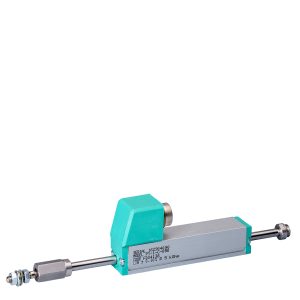 Principal Characteristics • The transducer’s compactness makes it suitable for installation in small spaces and for detecting small shifts. • The side connection creates a through-rod structure with double rod support, guaranteeing greater overall strength of the transducer. • Installation is simplified by the lack of electrical signal variation at output outside theoretical electrical stroke. • Ideal for small mechanical devices, valves, and test tools and benches.
Principal Characteristics • The transducer’s compactness makes it suitable for installation in small spaces and for detecting small shifts. • The side connection creates a through-rod structure with double rod support, guaranteeing greater overall strength of the transducer. • Installation is simplified by the lack of electrical signal variation at output outside theoretical electrical stroke. • Ideal for small mechanical devices, valves, and test tools and benches. -
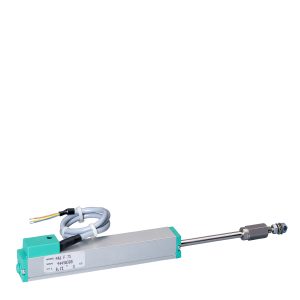 Principal Characteristics • The transducer’s compactness makes it suitable for installation in small spaces and for detecting small shifts. • The joint with up-take of slack and M4 threading provides greater tolerances in movement. • Installation is simplified by the lack of electrical signal variation at output outside theoretical electrical stroke. • Ideal for small mechanical devices, valves, and test tools and benches.
Principal Characteristics • The transducer’s compactness makes it suitable for installation in small spaces and for detecting small shifts. • The joint with up-take of slack and M4 threading provides greater tolerances in movement. • Installation is simplified by the lack of electrical signal variation at output outside theoretical electrical stroke. • Ideal for small mechanical devices, valves, and test tools and benches.
